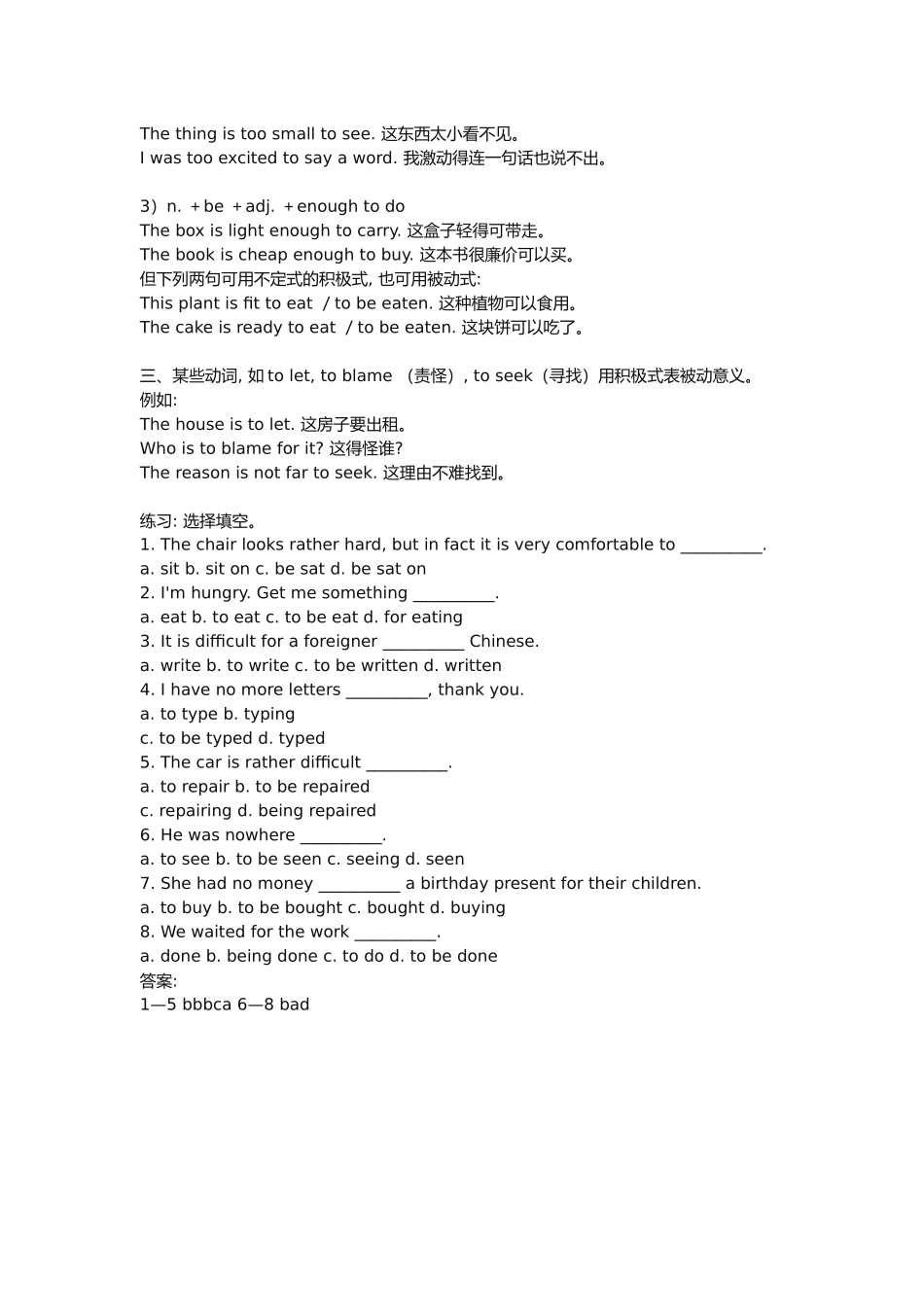动词不定式有两种被动式, 即一般式和完毕式, 例如 do 的被动式有 to be done, to have been done。只有及物动词和相称于及物动词的短语才有不定式的被动式。一般说来, 当不定式的逻辑主语是不定式动作的承受者时, 该不定式要用被动式。例如:He asked to be sent to work in that factory. 他规定派他去那个工厂工作。These books are not allowed to be taken out of the room. 这些书不许带出室外。但在某些状况下, 不定式虽然表达被动意思, 用的却是积极形式。常见的有下列几种状况:一、在某些固定句型中, 动词不定式作定语, 用积极形式表被动意义。1)have(give, show)sth. to do在这种句型中的不定式与前边的名词有动宾关系, 又和句中另一名词或代词构成主谓关系。例如: I have a lot of things to do this afternoon. to do 与 things 是动宾关系, 与 I 是主谓关系。否则, 在表达被动意义时, 仍需要被动式。试比较:Have you anything to do this afternoon? 今天下午你有事要做吗?(to do 是由 you 发出的)Have you anything to be taken to your parents? 你有要带给你父母的东西吗? (谁带不得而知)再如:Please get me something to read. 请给我弄点读的材料。He'll show you the right path to take. 他会给你指出要走的对的的路。2)It(This, That)+be+a/an+adj. + n. +to do在这种句型中, 不定式与前面的名词有动宾关系。动词不定式可改为动词不定式复合构造 。例如: This is a difficult question to answer. 这是个难答的问题。question 与 to answer 为动宾关系。to answer 可改为 for me to answer。再如:It is an easy sentence to translate. 这个句子很容易翻译。3)There +be +n. +to do在此句型中, 用来修饰主语的不定式, 可用积极式, 也可用被动式, 只是侧重点不一样。用积极式作定语, 重点在人, 用被动式作定语, 重点在物。例如:没有时间可以耽误。可译成:There is no time to lose(to be lost). 用 to lose 可当作 for us to lose; 用 to be lost, 谁 lost time 不明确。但下述两句用积极不定式与被动不定式意义不一样:a. There is nothing to do now. (=We have nothing to do now. )目前没事干。b. There is...


